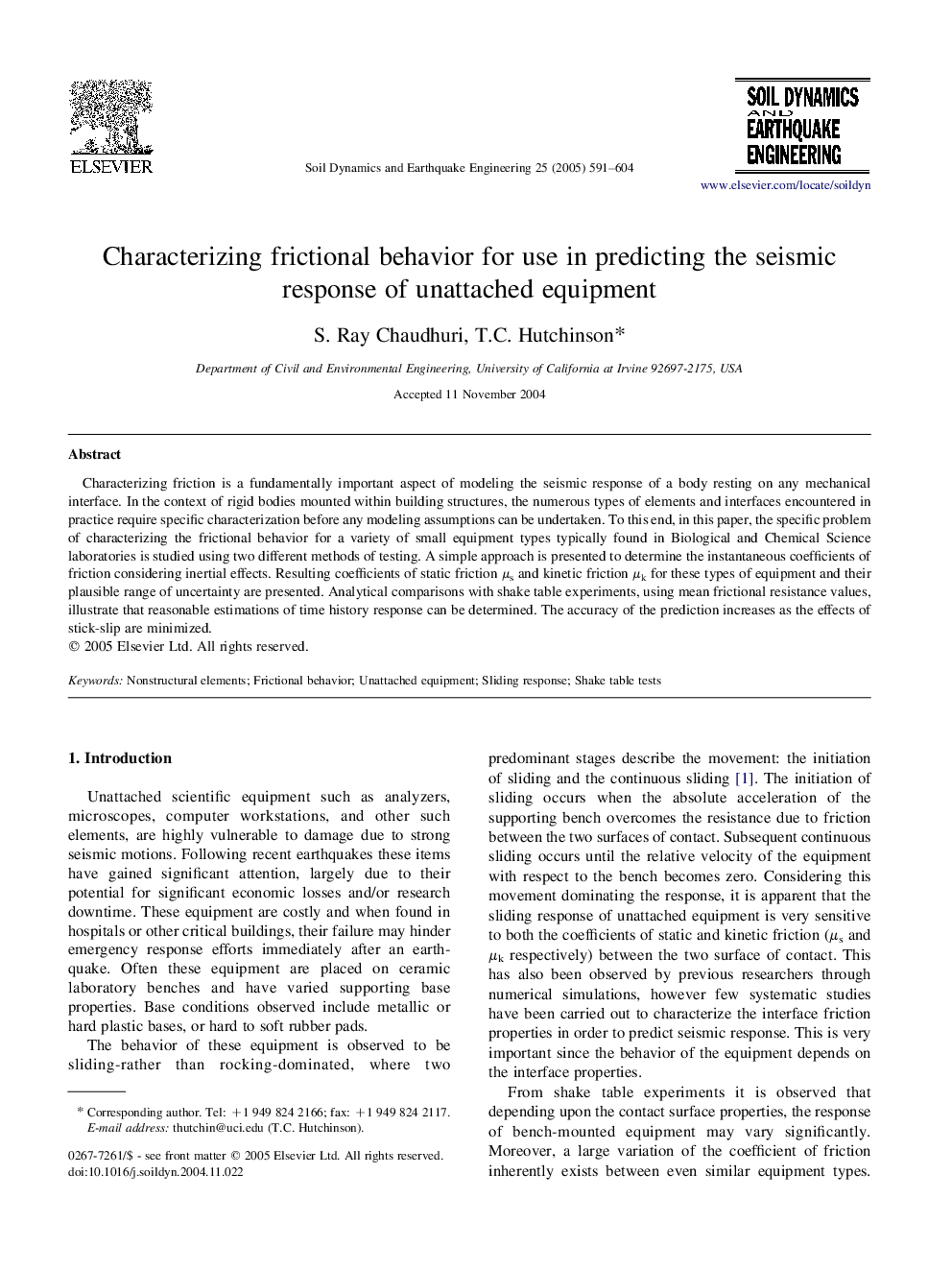| Article ID | Journal | Published Year | Pages | File Type |
|---|---|---|---|---|
| 9642583 | Soil Dynamics and Earthquake Engineering | 2005 | 14 Pages |
Abstract
Characterizing friction is a fundamentally important aspect of modeling the seismic response of a body resting on any mechanical interface. In the context of rigid bodies mounted within building structures, the numerous types of elements and interfaces encountered in practice require specific characterization before any modeling assumptions can be undertaken. To this end, in this paper, the specific problem of characterizing the frictional behavior for a variety of small equipment types typically found in Biological and Chemical Science laboratories is studied using two different methods of testing. A simple approach is presented to determine the instantaneous coefficients of friction considering inertial effects. Resulting coefficients of static friction μs and kinetic friction μk for these types of equipment and their plausible range of uncertainty are presented. Analytical comparisons with shake table experiments, using mean frictional resistance values, illustrate that reasonable estimations of time history response can be determined. The accuracy of the prediction increases as the effects of stick-slip are minimized.
Keywords
Related Topics
Physical Sciences and Engineering
Earth and Planetary Sciences
Geotechnical Engineering and Engineering Geology
Authors
S. Ray Chaudhuri, T.C. Hutchinson,
